Atlus
Persona 3 Reload: Once more, with feeling
Persona 3 is back, and even though it’s not the full version we wanted from the start, it manages to adapt old mechanics for a new generation.
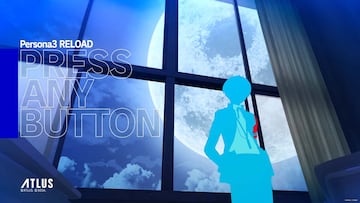
We live in a time where looking to the past is necessary not only to remember and survive but to find our future. The Persona series has become more than just a franchise, it is a place where we become those teenagers again, as well as the characters we control, and for some lucky ones, go back to the time when they got to play them. After a long experience, as we are now used to the series, we find ourselves in a visit to the past appropriated by its present in a mix that makes us want more.
Persona 3 Reload is a remake of the RPG released by Atlus in 2006. It follows a high school student who, one mysterious night, arrives at a dormitory to start his year at a new school. However, this being Persona, things are not as simple as they seem. In addition to school, our character joins the Specialized Extracurricular Execution Squad (SEES), a group of students who confront the shadows that appear in the city and who, thanks to a phenomenon called “The Dark Hour,” have an extra hour on the clock that the rest of the world doesn’t get to live, It also allows you and your classmates to enter a giant tower of more than 250 floors called Tartarus, where the mystery of the Shadows and the phenomenon known as Apathy Syndrome affect the students and residents of Tatsumi Port Island.
All of the RPG elements that we know from the Persona series are present, and if you were able to play the original version, you will most likely find all of its structure such as story, characters, and locations in place, but if you were able to play the portable version, you will surely find that some extras that were added to that version are missing. The story follows the same format of progressing day by day, doing different activities, from going to school, spending the afternoons socializing with your classmates, working in a cafe or a movie theater, or entertaining yourself by going to karaoke or playing in the arcades.
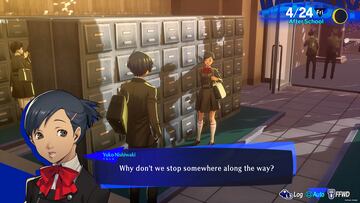
Many of these activities involve socializing with your squad mates, as well as other students within the school who will become your confidants. These types of social situations will leave rewards that, through the Social Link, will improve your relationship and use of certain people, until you reach the Theurgy Attacks. These range from going out to dinner to karaoke, to playing sports, or even going to the mall. Some of the stories advance us in small arcs that bring us closer to these characters, and although some can be a bit awkward, well, adolescence is like that.
Other tasks throughout the day will allow us to earn money or even improve certain skills, such as our Courage or Charm. There will also be activities that you can do through the computer in your room, such as playing online, taking some courses, or even getting food from a busy place.
On the other hand, each night you will have the opportunity to raid the Tartarus and face the Shadows and other enemies as you climb its many levels. Inside this tower is where exploration and combat come into play. Each floor we visit will present its Shadows, and sometimes we will find that the design of each floor changes, although we will find many similar and repetitive elements as we go up.
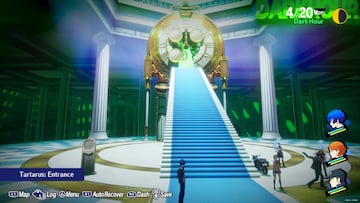
The interesting part, however, is the combat, which is an extremely rich experience. It remains faithful to its turn-based structure, to its use of Personas such as these summons that allow us to inflict elemental damage on our enemies, as well as special moves that cause great chain damage. The initial teams of 3 - and later 4 - expand their repertoire of attacks and options as the story progresses. One mechanic carried over from Persona 5 is the shift, which allows you to pass a turn to another teammate to continue a more coordinated attack. On the other hand, there will also be times when the game will allow our characters to fight on their own when facing lower-level enemies that are no longer a problem for our team.
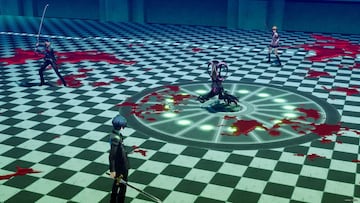
Although Persona 3 Reload sometimes feels like life itself, full of activities and little time to complete them, the game has quality-of-life elements that help make all the tasks easier. There will be points in the story where we reach our maximum level in Tartarus, so we don’t have to worry so much about our evenings and we can continue to improve our relationships or earn money to buy items or better weapons later.
And what can we say about the music? The bar is set pretty high when it comes to the music in these Atlus RPGs, and Persona 3 Reload is no exception. You’ll find yourself singing along to the songs over and over again, and you won’t get bored listening to them over and over again, both in combat and in other scenarios. From the songs that return with new renditions to the new tracks, both vocal and instrumental, the game feels very well accompanied by extremely appropriate themes.
The Persona franchise never fails to impress visually, and Persona 3 Reload boasts some of the most impressive menus in terms of design. The different shades of blue give the entire interface of the game a special look, making the experience feel like a visual treat right away. On the gameplay side, everything runs smoothly and fluidly, from combat to daytime at the school to nighttime in Tartarus. The style of the characters, the scenery, and even the way some of the NPCs are rendered make the visual context of the game so homogeneous that when we see a monster, it doesn’t feel like we’re in two completely different games.
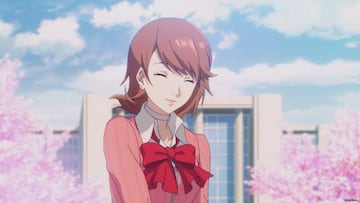
Persona 3 Reload is an RPG that proves that in the world of remakes, many improvements can be made, especially when it comes to quality of life. Though the game feels encompassed by Persona 5, for better or worse, the balance leads us to a version that not only breathes new life into a game from the PlayStation 2 era, but also brings those new fans who felt inaccessible an experience from 18 years ago.